Often portrayed negatively in the media, Artificial Intelligence is an innovation that can be a force for good - and that has certainly been the case on the railways. Peter Plisner investigates.
In this aticle:
Often portrayed negatively in the media, Artificial Intelligence is an innovation that can be a force for good - and that has certainly been the case on the railways. Peter Plisner investigates.
In this aticle:
- AI Challenges and Promise: While AI faces scrutiny for its rapid growth, its use on railways demonstrates significant potential for problem-solving.
- Applications in Railways: AI detects trespassers, prevents suicides, monitors wildlife, and inspects infrastructure, enhancing safety and reducing disruptions.
- Ethics and Oversight: Network Rail conducts reviews to ensure AI use adheres to privacy, security, and passenger trust standards.
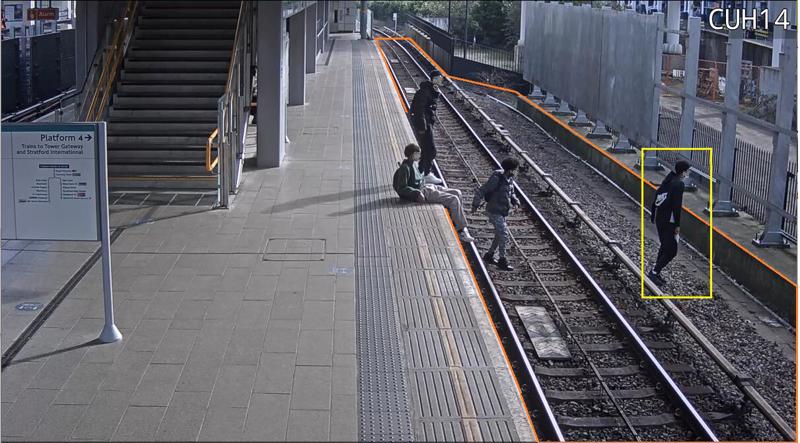
There has been a whole host of concerns about the use of Artificial Intelligence (AI), some of them stemming from how quickly it’s been developed and its increasing impact on society.
Aside from the obvious issues over security, many are worried about how AI might automate too many jobs and lead to unemployment.
There are also concerns about a loss of control as AI-powered computers become ‘superintelligent’ through machine learning.
But that same technology is also helping to make the railways safer and more reliable. And a series of well-managed trials is certainly proving that there is a place for AI on many parts of the network.
Many regular travellers might well have picked up a free newspaper on their train and read about Network Rail’s ‘secret’ use of AI cameras to scan passengers’ faces at major stations, including Waterloo and Euston, earlier his year.
The cameras, it was reported, were capable of establishing people’s age, gender and emotions, and had been operational for two years before their use became a big story.
Commenting at the time, Network Rail was keen to highlight how it takes security extremely seriously, and that it was using a range of advanced technologies across its stations and working closely with police and security services to ensure that it was taking proportionate action.
A spokesperson made it clear that during the trial no analysis of emotions took place, and that the system was no longer in use.
But although AI hit the headlines for the wrong reasons at its stations, Network Rail did highlight the fact that it’s now being used in a variety of locations across the network to tackle many different problems.
Take trespass on the railways, for example. It’s a perennial issue, and at its worst it can have tragic consequences, particularly when young people use the railway as a playground.
But even when it’s a comparatively minor incursion on the line, such as someone taking a short cut or a thief looking for cable to remove, trespass can cause long delays - trains are halted while transport police investigate, and for any necessary repairs to be carried out.
Passenger services are disrupted as the railway grinds to a halt, making journeys unreliable.
Current systems for detecting trespass on the railways are mainly dependent on reports from railway workers or members of the public, or from an operator monitoring CCTV screens in a control room that often covers hundreds of miles of track.
Keeping an eye out for trespassers on scores of different screens isn’t easy and some incidents can go unnoticed.
So, imagine a system where a computer analyses the camera images coming into the control room, and then alerts an operator to a suspected trespassing incident.
Although the trial has now ended, Network Rail has been working with Oxfordshire-based AI specialist Purple Transform, whose SiYtE ‘Smart Analytics for Trespass Detection’ system uses advanced AI technology to analyse real-time CCTV, from existing cameras, to identify potential trespassers and alert appropriate responders.
The company claims it is proven to work on the railway, with firm evidence of both detecting and reducing trespass. It has been used at several trespass hotspots.
“There are thousands and thousands of cameras across the railway and almost none of them really are proactively monitored,” says Purple Transform Chief Technology Officer Richard Osborne.
“They are there for evidence purposes. The potential for AI to monitor these cameras, detect an event and alert someone to that event, and to improve safety on the railway, is massive.”
AI detection systems have also been used on London’s Docklands Light Railway (DLR).
Its trains are driverless, so there’s no one looking out for anyone on the tracks. Instead, DLR is heavily reliant on operators in a control room to keep an eye out for trespass events.
But it has 1,400 cameras, so monitoring all of them isn’t always easy.
There are also passenger help points and stop buttons on the platforms, but again DLR is reliant on human involvement.
An AI system was first tried at Limehouse station, but the quality of images from old analogue cameras wasn’t good enough. Although they had some successes detecting when people went onto the tracks, there were also a lot of false alarms.
The solution was to use digital camaras with higher-quality images.
One station which already had the more modern cameras was Custom House, a busy station that serves London’s Excel exhibition centre.
DLR Technical Interface Manager Matt Nolan explains: “We didn’t install cameras specifically for the trial. We used the existing camera positions, and that was the aim of the game because if you’re doing a fresh installation then your budget goes through the ceiling.
“Using the existing cameras was what we wanted to try and achieve. We put the software on, spent a few months tuning it to eliminate the false alarms.
“Then we got to a phase where we were able to do an offline trial where myself and the engineers could see what was going on there.
“But before we brought it into the control centre for the controllers to actually look at, we eliminated the vast majority of the false alarms.”
There is a 55-inch display that’s dedicated to Custom House station and the eight cameras used for the trial. They are interfaced with ‘Smart City’ software from a company called Commend International.
Nolan adds: “If anybody goes off of the platform onto the track, or if anybody appears on the track from walking from the end of the platform, the system will set off an audible alarm.
“A video feed appears in real time and there is near zero lag, which was another feature we had to have because if there’s a five- or six-second lag between the person actually going on the track and you being notified, that’s five or six seconds too long.”
The system, which is still in operation, has been highly successful. DLR has an appetite to expand it across its network, but that will depend on the availability of more digital cameras.
It also has plans to upgrade its data network in the near future, which will allow for old analogue cameras to be replaced.
The same systems could potentially also be used to prevent suicides on the railways.
Latest figures indicate that more than 250 people took their own lives along the UK rail network last year. Not only are these deaths personal tragedies, they are also the cause of trauma for the families involved, the rail workers and other witnesses,
Another innovation from Purple Transform aims to enable railway personnel and the police to make swifter and better-informed actions that will help prevent lives being lost.
Project SAIVE is based on understanding a set of behaviours that could lead to a potential suicide attempt.
Osborne explains: “We wanted to know whether we could take our work on trespass to another level, so we worked with Lancaster University about what are the set of behaviours that are indicative of a person before they commit suicide.
“There are some actions that we have no chance of knowing, such as emotional troubles.
“There are a second set of behaviours that you wouldn’t really want to analyse from a privacy perspective, such as facial expressions.
“But there are other behaviours that don’t veer on personal information and data privacy, such as pacing up and down the platform and extended dwell times on the platform.
“Perhaps two trains go past, and the person doesn’t get on the train. Extended times standing across the yellow line, sitting down on the platform edge, and leaving a bag unattended is another one.”
While welcoming any moves to reduce the number of suicides on the railways, Samaritans, which already works closely with railway companies, remains cautious about the use of AI.
“As a suicide prevention charity, we are always keen to explore any new ways of reducing lives lost to suicide,” says Samaritans Head of Rail Programme Olivia Cayle.
“We are working with partners to research possibilities of technology and ensuring they are ethical and safe. However, there is a long way to go until we know enough about the efficacy of this method for suicide prevention.”
But it’s not just about people trespassing on the railway. Network Rail has also been protecting wildlife, partnering with train operator LNER to trial a deer detection system using AI on the East Coast Main Line, from London King’s Cross to Edinburgh.
NR found two hotspots with high volumes of deer entering the railway boundary.
The automated deer deterrent system uses sound and vision sensors to identify when a deer approaches the track. Once it detects the deer, it sets off an alarm that warns the animal away. The AI cameras then monitor the deer’s movement until it’s moved a safe distance away.
The system has been a success, with nearly 6,000 deer deterred from accessing the railway.
NR Route Engineer Jo Priestly says: “We’re really happy to have partnered with LNER on this trial, which will help to better protect deer from coming to harm on the railway, as well as reducing disruption and delays for passengers.
“The results from this trial have been very positive, and we look forward to rolling out this technology at further locations on the East Coast route.”
One of the biggest and most effective uses of AI on the railways is in dealing with track and lineside defects.
In Network Rail’s Eastern Region, the company has been pioneering a system that looks at lineside vegetation and the risks where fast-growing trees and shrubs could (for example) block a drivers’ view of a vital signal.
But machine learning through AI is also being used to look at overhead power lines and pinpoint track defects, through the use of NR’s Plain Line Pattern Recognition Train.
The problem in the past has been the sheer weight of data that’s been collected and then needed to be analysed.
Analysis by humans could take weeks. AI can do it more quickly and rate the risk as high, medium or low, with higher-risk issues then getting swift human intervention.
Then there’s the actual inspection of railway assets. Again, human inspection can be slow and boring, which can lead to mistakes being made. AI clearly helps by removing the need for regular human inspections everywhere.
Haydon Bartlett-Tasker, managing director of AI transport specialist Crosstech, says: “Our focus has been to try and alleviate some of the railway’s most boring tasks, which often frontline teams don’t want to do. They’re often very time-consuming and quite challenging, because of the issues related to getting onto the railway.”
His company won ‘First of a Kind’ innovation funding from the Department for Transport and Innovate UK, for a project that pioneered placing a standard camera in the cab of a normal train in service to conduct AI infrastructure inspection.
“We worked closely with the frontline teams around vegetation management. We helped them reduce the time it took to undertake those inspections and create a more data-driven and risk-based approach,” says Bartlett-Tasker.
The success of Crosstech and others has led to a much more focused approach to almost every asset on the railways.
Tara Scott, Infrastructure Director at Network Rail’s Eastern Region, says: “Every asset is in that space now. The issue is: how do we collect lots of data, but turn it into valuable information?
“That’s where AI is really useful. You can collect loads of data, but you need to have that ability to change it into intelligent information to then do something with it.”
The data being collected is also looking at where there could be landslips or issues with bridges, two elements of the infrastructure that have caused lines to shut in several parts of the country, causing huge disruption for many days.
With data constantly being analysed with AI, problems can be spotted and rectified well before they become a big issue.
Says Scott: “With resilience, we’ve made a massive commitment in Control Period 7 [2024-29]. I think there is a lot that AI can give us around degradation of the asset, so we can intervene at the right point.”
Although some uses of AI are continuing, some have been temporarily halted in the light of the headlines caused by the analysis of cameras at some of Network Rail’s major stations.
Ultimately passengers need to be reassured that any use of AI technology is safe and secure. That’s part of the reason that NR has launched a UK-wide review of AI technologies.
A spokesperson says: “AI has huge potential to help improve security on the railway, particularly when it comes to trespass - a major source of delay.
“Modern CCTV systems can all be set up to work with AI analysis, to predict and prevent potential incidents and guide operators.”
However, the spokesperson adds: “We also have to be careful we stick to strict limits on what kind of data the AI can use and how it can be stored.
“For instance, while police can use facial recognition software under certain circumstances, Network Rail will not be doing that.”
And on the subject of the review, NR says: “We are working to provide a clear map for any part of Network Rail looking to use AI and CCTV together. It will set out when and how it can be used, what data it can record and where that data is stored.
“AI is a powerful tool and we have to respect that. We also need the trust of passengers that we will use it correctly.”
For a full version of this article with more images, Subscribe today and never miss an issue of RAIL. With a Print + Digital subscription, you’ll get each issue delivered to your door for FREE (UK only). Plus, enjoy an exclusive monthly e-newsletter from the Editor, rewards, discounts and prizes, AND full access to the latest and previous issues via the app.
Login to continue reading
Or register with RAIL to keep up-to-date with the latest news, insight and opinion.


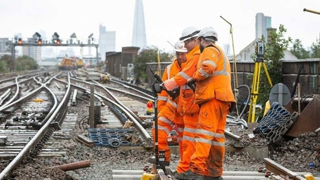
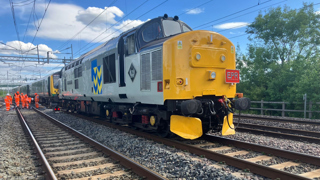
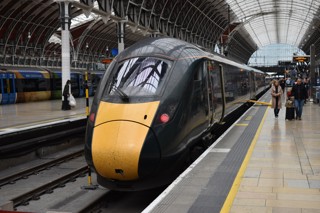
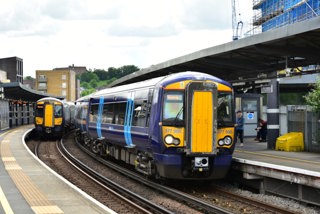
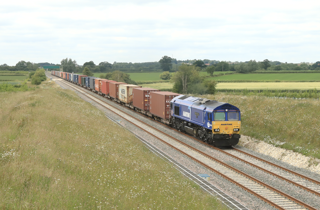










Login to comment
Comments
No comments have been made yet.